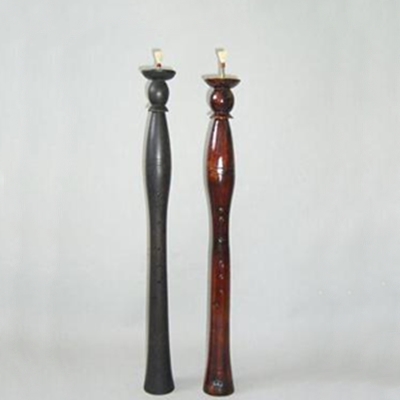Hujia overview

Hu Jia (pinyin: Hú Jiā), also known as Chao'er and Modun Chao'er, is a musical instrument of ancient northern peoples in my country.
The wooden three-hole huja huja pipe is made of wood, with a length of 58.5 cm and a diameter of 1.8 cm. There are three circular sound holes at the lower part, and there is no reed at the upper end of the pipe.
When Hu Jia is playing, the body of the pipe is placed upright, the pipe is held in both hands, and the index and middle fingers of both hands are placed in the three sound holes respectively. The upper end of the nozzle is close to the lower lip, and the breath is pronounced. A pentatonic scale of twelve degrees. The guttural sound is often used for playing, and the guttural sound is often combined with the pipe sound to make sounds at the same time, or the guttural sound is used to elicit the pipe sound. Hu Jia can be used for solo, instrumental ensemble or band accompaniment. It is a wind instrument with strong national color.
The original Hu Jia was used in wars. At the time of the Western Han Dynasty, it was widely popular in the northern and western regions. With the development of society, various forms of Hujia appeared in history.
- type:edge air musical instrument
- nickname:Tide, Morton Tide
- Pinyin:Hú Jiā
overview of other similar instruments
- sanyanxiao overview
- Daguangxian overview
- Leiqin overview
- hahao overview
- yandundagu overview
- Han Xiaozheng overview
- Fang Xiang overview
- guanzi overview
- zhuqin (Dao Qin) overview
- zhuiqin overview
- bangzi overview
- three-stringed piano overview
- Gehu overview
- xiao overview
- xiaokonghou overview
- Konghou overview
- Sheng overview
- suona overview
- hulusi overview
- gushao overview
 渝公网安备 50010702504639号
渝公网安备 50010702504639号